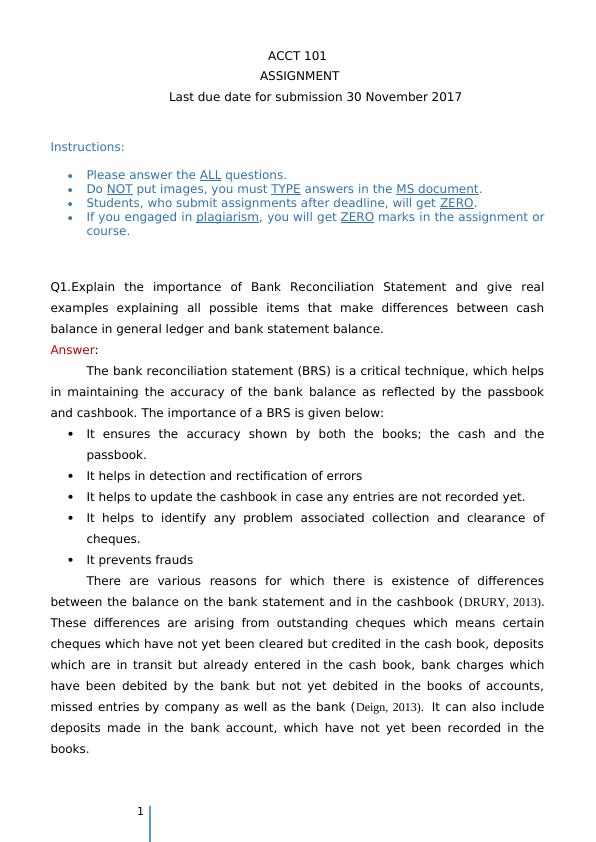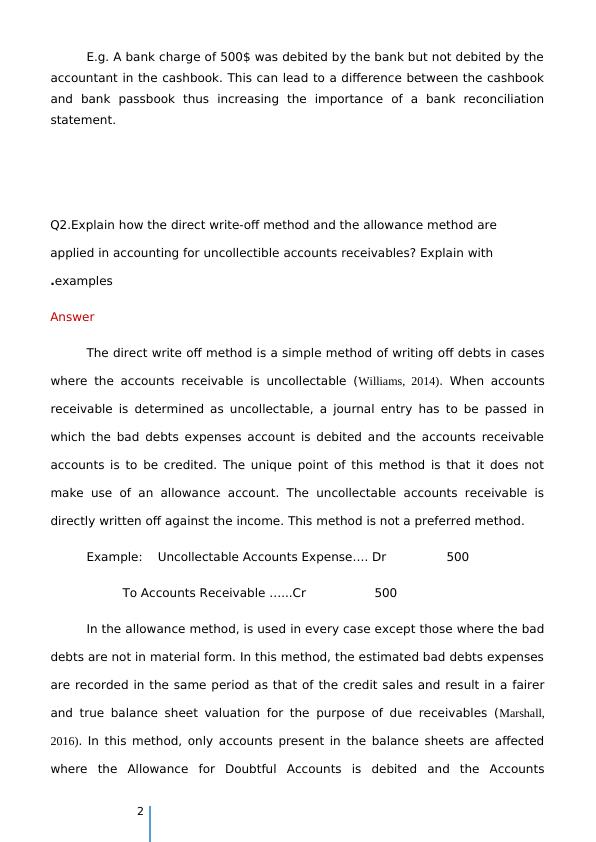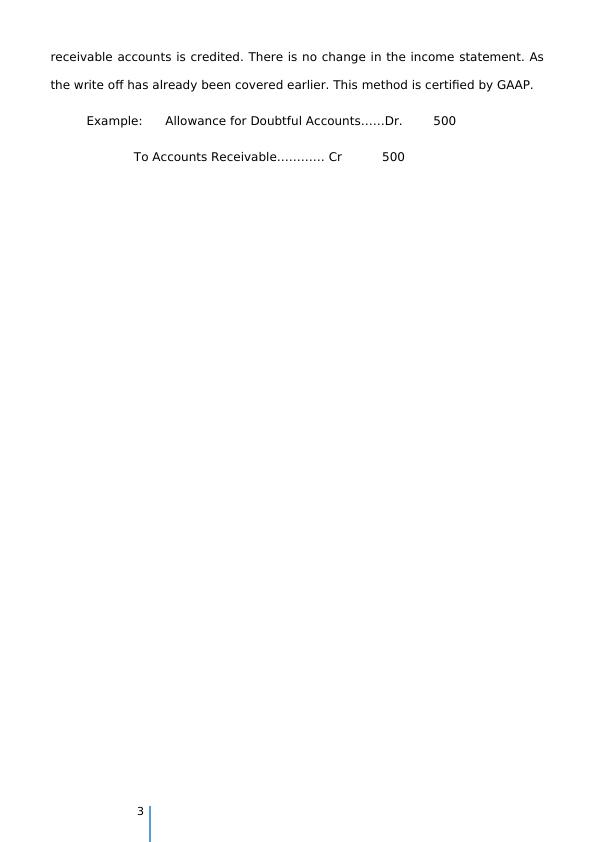ACCT 101 Accounting and Financial Report Assignment
Added on 2020-05-11
6 Pages1144 Words97 Views
ACCT 101ASSIGNMENTLast due date for submission 30 November 2017Instructions: Please answer theALLquestions.Do NOTput images, you must TYPE answers in the MS document.Students, who submit assignments after deadline, will getZERO.If you engaged inplagiarism, youwill getZEROmarks in the assignment orcourse.Q1.Explain the importance of Bank Reconciliation Statement and give realexamples explaining all possible items that make differences between cashbalance in general ledger and bank statement balance.Answer: The bank reconciliation statement (BRS) is a critical technique, which helpsin maintaining the accuracy of the bank balance as reflected by the passbookand cashbook. The importance of a BRS is given below: It ensures the accuracy shown by both the books; the cash and thepassbook.It helps in detection and rectification of errorsIt helps to update the cashbook in case any entries are not recorded yet.It helps to identify any problem associated collection and clearance ofcheques.It prevents fraudsThere are various reasons for which there is existence of differencesbetween the balance on the bank statement and in the cashbook (DRURY, 2013).These differences are arising from outstanding cheques which means certaincheques which have not yet been cleared but credited in the cash book, depositswhich are in transit but already entered in the cash book, bank charges whichhave been debited by the bank but not yet debited in the books of accounts,missed entries by company as well as the bank (Deign, 2013). It can also includedeposits made in the bank account, which have not yet been recorded in thebooks.1

E.g. A bank charge of 500$ was debited by the bank but not debited by theaccountant in the cashbook. This can lead to a difference between the cashbookand bank passbook thus increasing the importance of a bank reconciliationstatement.Q2.Explain how the direct write-off method and the allowance method are applied in accounting for uncollectible accounts receivables? Explain with examples.AnswerThe direct write off method is a simple method of writing off debts in caseswhere the accounts receivable is uncollectable (Williams, 2014). When accountsreceivable is determined as uncollectable, a journal entry has to be passed inwhich the bad debts expenses account is debited and the accounts receivableaccounts is to be credited. The unique point of this method is that it does notmake use of an allowance account. The uncollectable accounts receivable isdirectly written off against the income. This method is not a preferred method.Example: Uncollectable Accounts Expense.... Dr500To Accounts Receivable ......Cr500In the allowance method, is used in every case except those where the baddebts are not in material form. In this method, the estimated bad debts expensesare recorded in the same period as that of the credit sales and result in a fairerand true balance sheet valuation for the purpose of due receivables (Marshall,2016). In this method, only accounts present in the balance sheets are affectedwhere the Allowance for Doubtful Accounts is debited and the Accounts2

receivable accounts is credited. There is no change in the income statement. Asthe write off has already been covered earlier. This method is certified by GAAP.Example: Allowance for Doubtful Accounts......Dr. 500 To Accounts Receivable............ Cr 5003

End of preview
Want to access all the pages? Upload your documents or become a member.
Related Documents
Accounting for Business Decisions: Bank Reconciliation, Inventory Costing, Depreciation, and Adjusting Entrieslg...
|13
|2110
|469
Accounting for Business Decisions Supplementary Assessmentlg...
|10
|2121
|407
Business Accounting - Question and Answerlg...
|10
|818
|16
ACCT 1211: Accounting I - Assignment 8lg...
|10
|1026
|301
Bank Reconciliation as on Aprillg...
|2
|272
|20
Bank Reconciliation Statementlg...
|12
|566
|313
